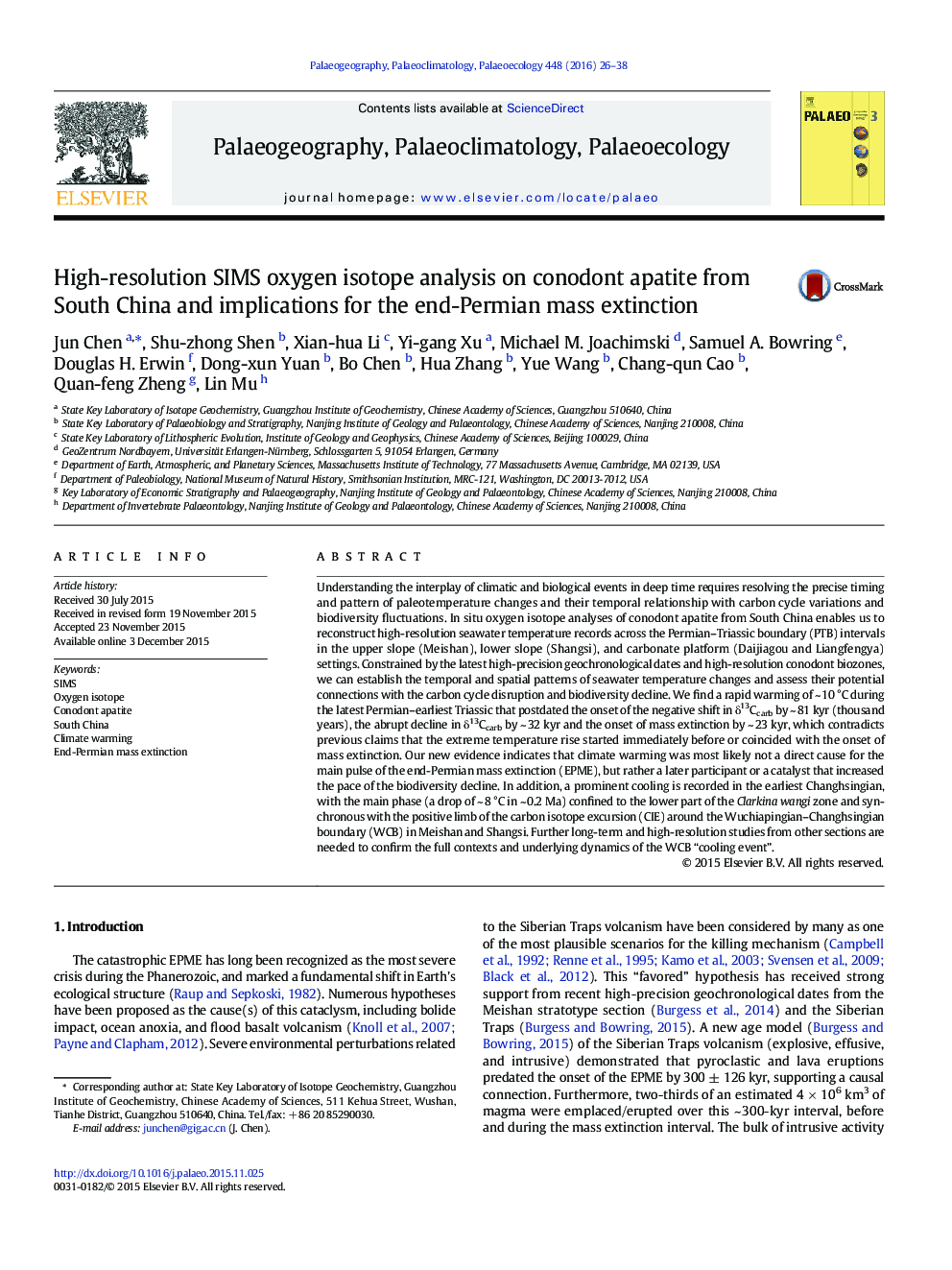| کد مقاله | کد نشریه | سال انتشار | مقاله انگلیسی | نسخه تمام متن |
|---|---|---|---|---|
| 4465836 | 1622143 | 2016 | 13 صفحه PDF | دانلود رایگان |
• High-resolution in situ δ18Oapatite records from four PTB sections in South China are presented.
• A uniform temporal framework is established to assess the timing and magnitude of seawater temperature changes.
• A prominent cooling is observed in the earliest Changhsingian, with the main phase (a drop of ~ 8 °C in ~ 0.2 Ma) confined to the lower part of the C. wangi zone.
• A dramatic warming (a rise of ~ 10 °C in < 20 kyr) occurred after the negative shift in δ13Ccarb and the onset of the EPME.
• New evidence suggests that climate warming was not a direct cause for the main pulse of the EPME.
Understanding the interplay of climatic and biological events in deep time requires resolving the precise timing and pattern of paleotemperature changes and their temporal relationship with carbon cycle variations and biodiversity fluctuations. In situ oxygen isotope analyses of conodont apatite from South China enables us to reconstruct high-resolution seawater temperature records across the Permian–Triassic boundary (PTB) intervals in the upper slope (Meishan), lower slope (Shangsi), and carbonate platform (Daijiagou and Liangfengya) settings. Constrained by the latest high-precision geochronological dates and high-resolution conodont biozones, we can establish the temporal and spatial patterns of seawater temperature changes and assess their potential connections with the carbon cycle disruption and biodiversity decline. We find a rapid warming of ~ 10 °C during the latest Permian–earliest Triassic that postdated the onset of the negative shift in δ13Ccarb by ~ 81 kyr (thousand years), the abrupt decline in δ13Ccarb by ~ 32 kyr and the onset of mass extinction by ~ 23 kyr, which contradicts previous claims that the extreme temperature rise started immediately before or coincided with the onset of mass extinction. Our new evidence indicates that climate warming was most likely not a direct cause for the main pulse of the end-Permian mass extinction (EPME), but rather a later participant or a catalyst that increased the pace of the biodiversity decline. In addition, a prominent cooling is recorded in the earliest Changhsingian, with the main phase (a drop of ~ 8 °C in ~ 0.2 Ma) confined to the lower part of the Clarkina wangi zone and synchronous with the positive limb of the carbon isotope excursion (CIE) around the Wuchiapingian–Changhsingian boundary (WCB) in Meishan and Shangsi. Further long-term and high-resolution studies from other sections are needed to confirm the full contexts and underlying dynamics of the WCB “cooling event”.
Figure optionsDownload high-quality image (225 K)Download as PowerPoint slide
Journal: Palaeogeography, Palaeoclimatology, Palaeoecology - Volume 448, 15 April 2016, Pages 26–38
